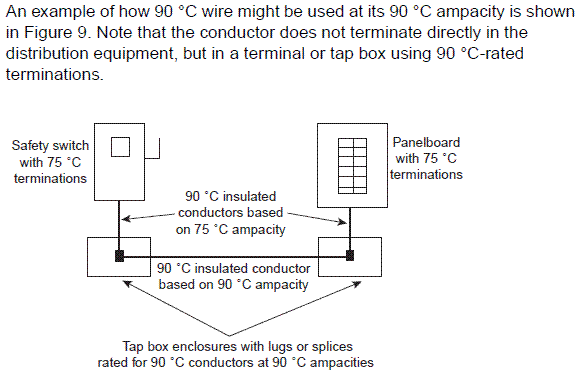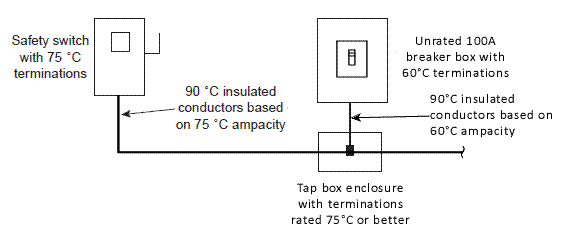Volta
Senior Member
- Location
- Columbus, Ohio
So if the conductor is connected to a 60 deg C circuit breaker, how can the circuit be arranged through splices, sizes, or insulation types to allow the 'dowstream' components to be used at, say, a 75 deg C ampacity?
Consider:
OCPD with 60 deg termination > 75 deg wire calculated at 60 deg > splicing device rated at 75 deg > 75 degree wire > 75 deg termination, then is the splice a violation?
Consider:
OCPD with 60 deg termination > 75 deg wire calculated at 60 deg > splicing device rated at 75 deg > 75 degree wire > 75 deg termination, then is the splice a violation?



